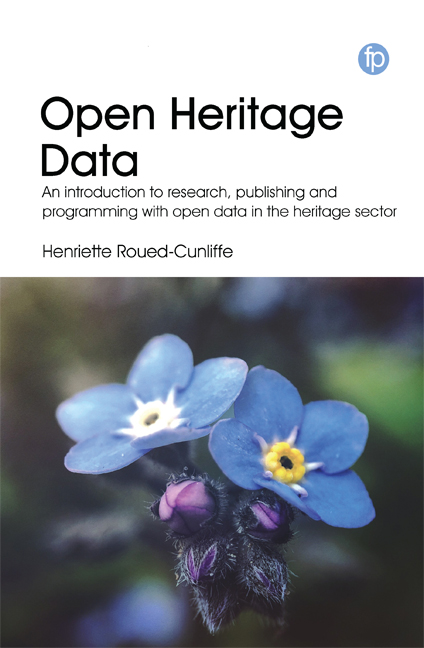 Open Heritage Data
Open Heritage Data Book contents
- Frontmatter
- Dedication
- Contents
- List of Case Studies, Figures and Tables
- List of Abbreviations
- Acknowledgements
- Preface
- Introduction
- 1 Openness in Heritage
- 2 Sharing Legally
- 3 Publishing Open Data
- 4 Using and Reusing Open Data
- 5 Visualising Open Data
- 6 Combining Open Data
- 7 Open Data for Research
- Appendix A Examples Used in the Book
- Appendix B Introduction to Coding
- References
- Index
3 - Publishing Open Data
Published online by Cambridge University Press: 23 July 2020
- Frontmatter
- Dedication
- Contents
- List of Case Studies, Figures and Tables
- List of Abbreviations
- Acknowledgements
- Preface
- Introduction
- 1 Openness in Heritage
- 2 Sharing Legally
- 3 Publishing Open Data
- 4 Using and Reusing Open Data
- 5 Visualising Open Data
- 6 Combining Open Data
- 7 Open Data for Research
- Appendix A Examples Used in the Book
- Appendix B Introduction to Coding
- References
- Index
Summary
Heritage data can take many forms, from digitised oil paintings to lists of archaeological finds. Thus, there is no one-size-fits-all solution to publishing these many varied data forms.
The aim of this chapter is to ensure that professionals and amateurs in the heritage community, such as museum curators, archivists, community historians, etc. can get practical advice and inspiration on how to publish their own datasets. The examples used are taken from around the world to show the varying degree of openness in publishing OHD today.
I will use the five questions from the OHD Model explained in Chapter 1 to evaluate the openness of the published data in each example.
1 Is the material published online, with metadata so that it can be searched and filtered?
2 Is the material published with an open licence or in the public domain, and is this clearly communicated in conjunction with the material?
3 Does the institution actively encourage reuse of the material and provide support for anyone who wishes to reuse it, free of charge?
4 Is the material available in an open, machine-readable format that anyone can export/download?
5 Is the material available through a well-described web service or API that anyone has access to?
Each of these questions opens up for further questions, which will be exemplified in the following. For example, if heritage collections are published online with metadata, this opens them up for a basic discovery of what the collections contain. This discovery is usually independent of location and can lead to further interest in the institution in question. However, an important aspect of the metadata can be whether the material is accessible to view at the institution. For example, is the artwork on display, or is it possible to read the documents?
If the material is published with open licences or the institution communicates clearly that it is in the public domain, which parts of the material are covered? Does the CC0 licence cover the only metadata provided by the institution, and which images are in or out of copyright?
If the institution encourages reuse, how do they communicate this to users? Sometimes this is written only on an ‘about’ page, meaning that the users have to go looking in order to learn that the material is available for reuse.
- Type
- Chapter
- Information
- Open Heritage DataAn Introduction to Research, Publishing and Programming with Open Data in the Heritage Sector, pp. 39 - 56Publisher: FacetPrint publication year: 2019
